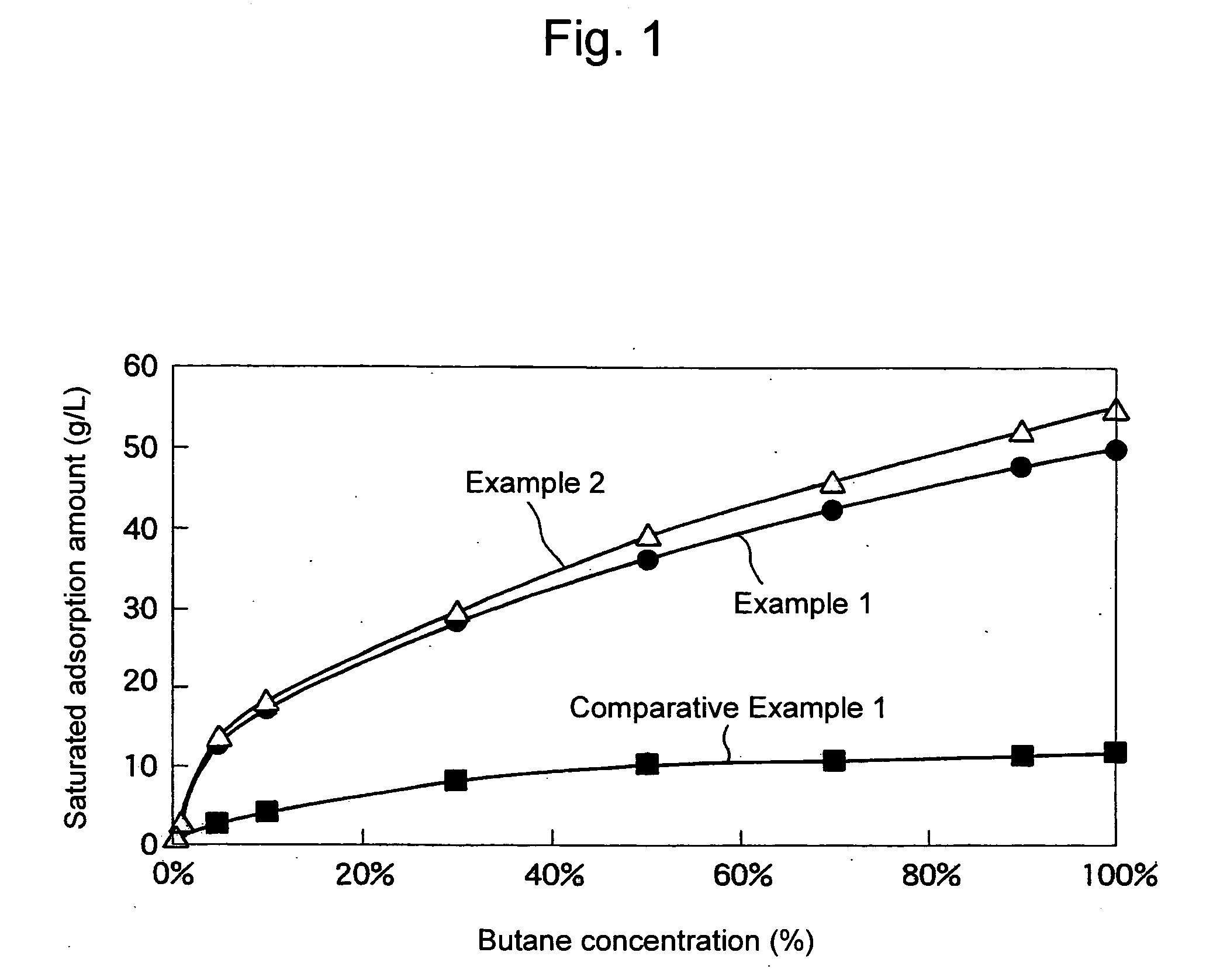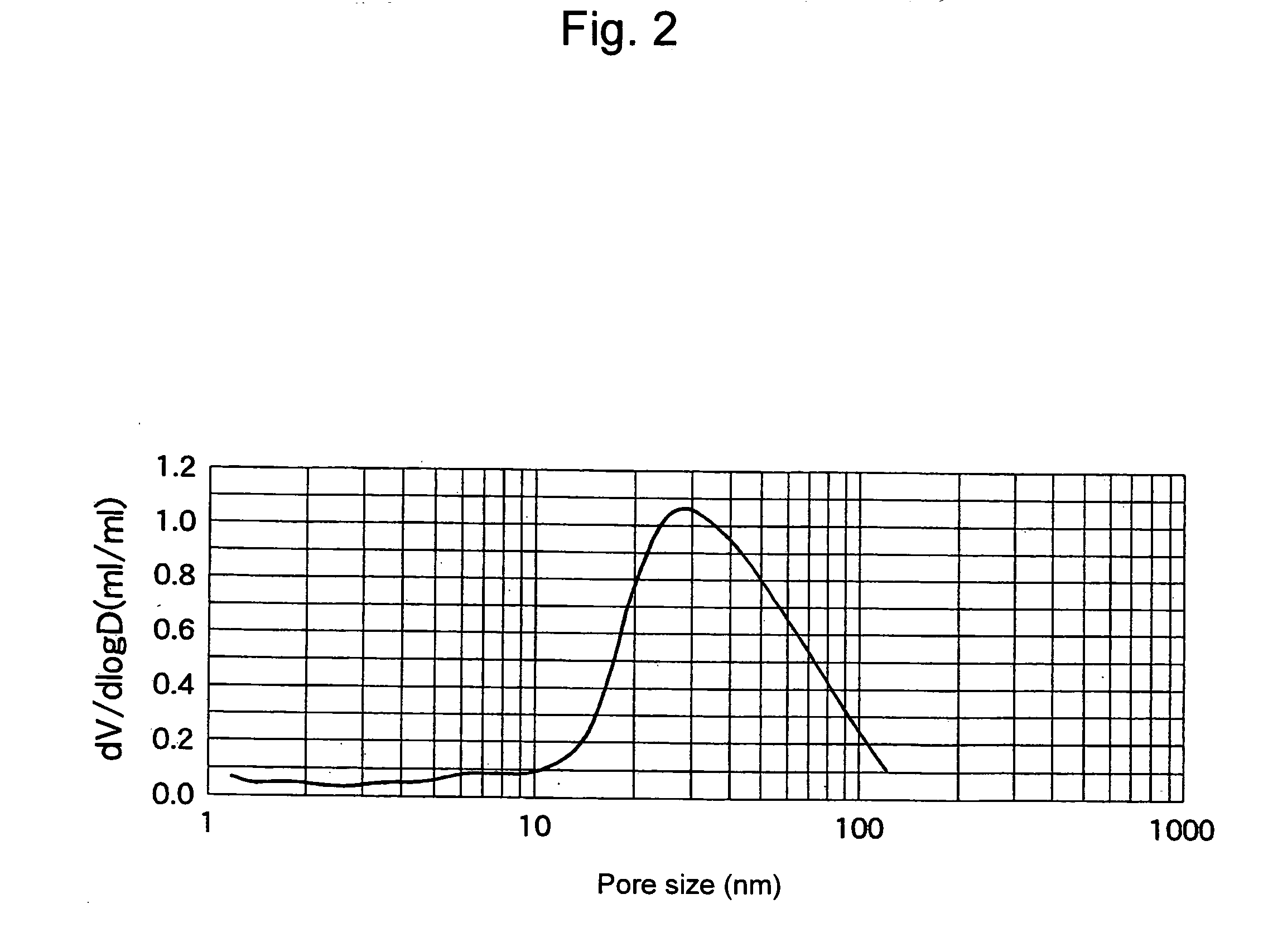Absorbent Material for Low-Molecular-Weight Organic Gas and Fuel Vapor Treatment Apparatus Using Same
- Summary
- Abstract
- Description
- Claims
- Application Information
AI Technical Summary
Benefits of technology
Problems solved by technology
Method used
Image
Examples
example 1
[0029]Thirty parts by weight of n-dodecane as the organic compound was dipped and impregnated into 100 parts of hydrophobic silica gel with an average pore size of 30 nm. The gel was then dried for 1 hour at 200° C. using a drier to obtain the desired absorbent material 1. The volatile content of this absorbent material 1 at 200° C. was 2.2%, and at 900° C. the volatile content was 19.6%. The 100% butane saturated adsorption amount at 25° C. of this absorbent material 1 was 50.5 g / mL. The results of an n-butane adsorption isotherm at 25° C. of this absorbent material 1 are shown in FIG. 1.
example 2
[0030]Thirty parts by weight of linoleic acid as the organic compound was dipped and impregnated into 100 parts of hydrophobic silica gel with an average pore size of 30 nm. The gel was then dried for 1 hour at 200° C. using a drier to obtain the desired absorbent material 2. The volatile content of this absorbent material 2 at 200° C. was 0.6%, and at 900° C. the volatile content was 15.3%. The 100% butane saturated adsorption amount at 25° C. of this absorbent material 2 was 50.6 g / mL. The results of an n-butane adsorption isotherm at 25° C. of this absorbent material 2 are shown in FIG. 1.
PUM
| Property | Measurement | Unit |
|---|---|---|
| Temperature | aaaaa | aaaaa |
| Pore size | aaaaa | aaaaa |
| Density | aaaaa | aaaaa |
Abstract
Description
Claims
Application Information
 Login to View More
Login to View More - R&D
- Intellectual Property
- Life Sciences
- Materials
- Tech Scout
- Unparalleled Data Quality
- Higher Quality Content
- 60% Fewer Hallucinations
Browse by: Latest US Patents, China's latest patents, Technical Efficacy Thesaurus, Application Domain, Technology Topic, Popular Technical Reports.
© 2025 PatSnap. All rights reserved.Legal|Privacy policy|Modern Slavery Act Transparency Statement|Sitemap|About US| Contact US: help@patsnap.com


